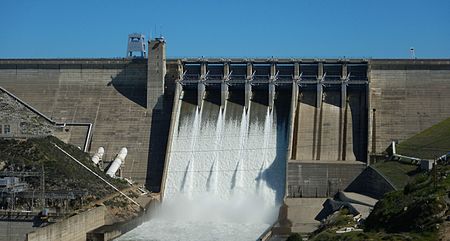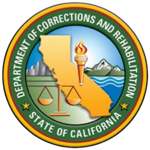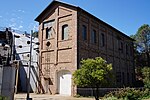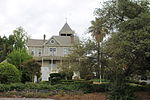Folsom Dam

Folsom Dam is a concrete gravity dam on the American River of Northern California in the United States, about 25 mi (40 km) northeast of Sacramento. The dam is 340 ft (100 m) high and 1,400 ft (430 m) long, flanked by earthen wing dams. It was completed in 1955, and officially opened the following year. Located at the junction of the north and south forks of the American River, the dam was built by the United States Army Corps of Engineers, and was transferred to the United States Bureau of Reclamation upon its completion. The dam and its reservoir, Folsom Lake, are part of the Central Valley Project, a multipurpose project that provides flood control, hydroelectricity, irrigation, and municipal water supply. To increase Sacramento's flood protection to 200-year flood protection (meaning that the area is protected from a flood that has a 0.5% chance of occurring in any given year), the Corps of Engineers recently constructed an auxiliary spillway, which was completed in October 2017; it enables Folsom Dam operators to increase outflows to prevent the lake level from reaching or exceeding the height of the main dam gates.Another Central Valley Project dam, Nimbus Dam, is located further down river.
Excerpt from the Wikipedia article Folsom Dam (License: CC BY-SA 3.0, Authors, Images).Folsom Dam
Folsom Dam Road, Folsom
Geographical coordinates (GPS) Address Nearby Places Show on map
Geographical coordinates (GPS)
| Latitude | Longitude |
|---|---|
| N 38.7077 ° | E -121.1565 ° |
Address
Folsom Dam Road
Folsom Dam Road
95671 Folsom
California, United States
Open on Google Maps








